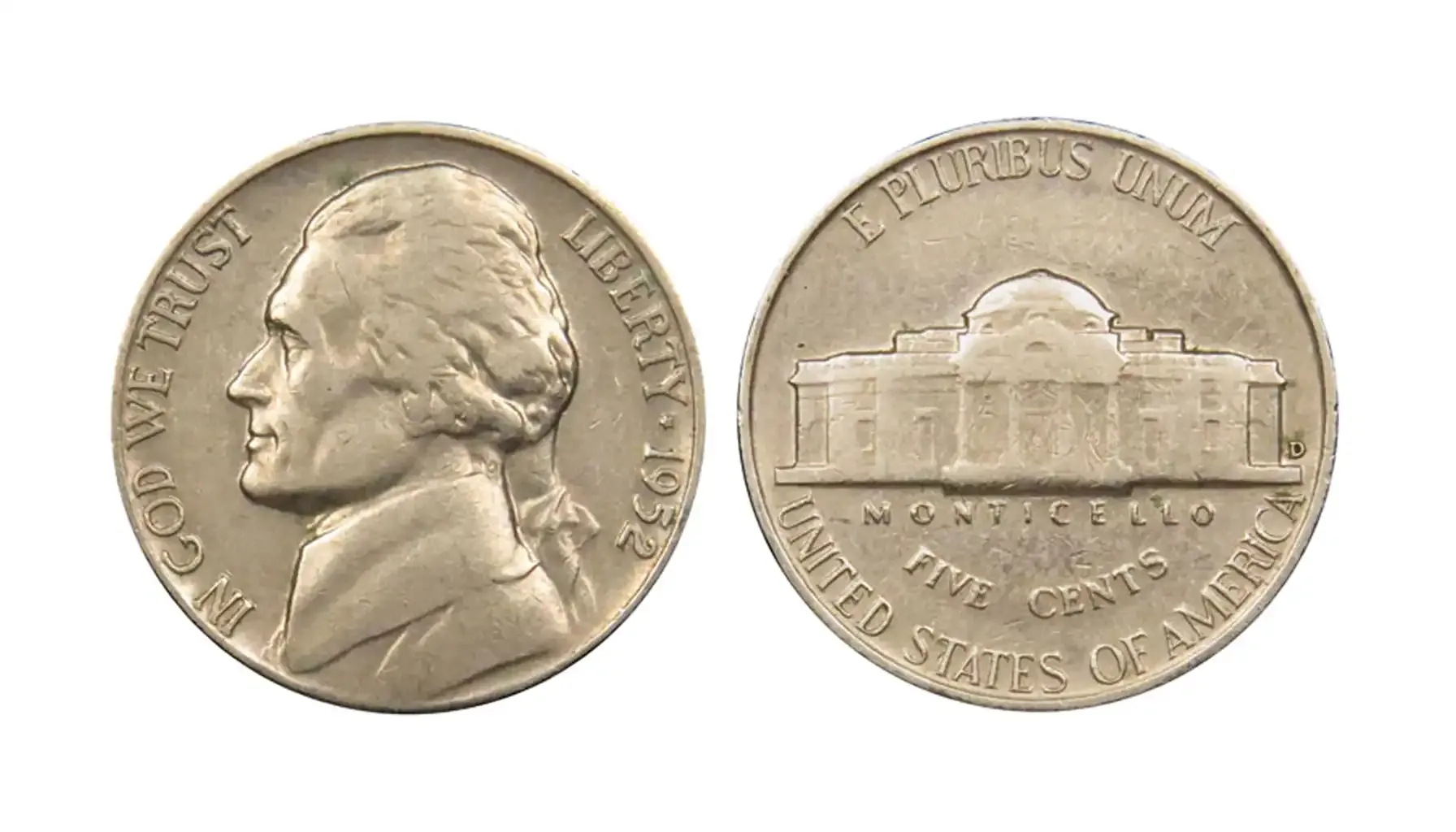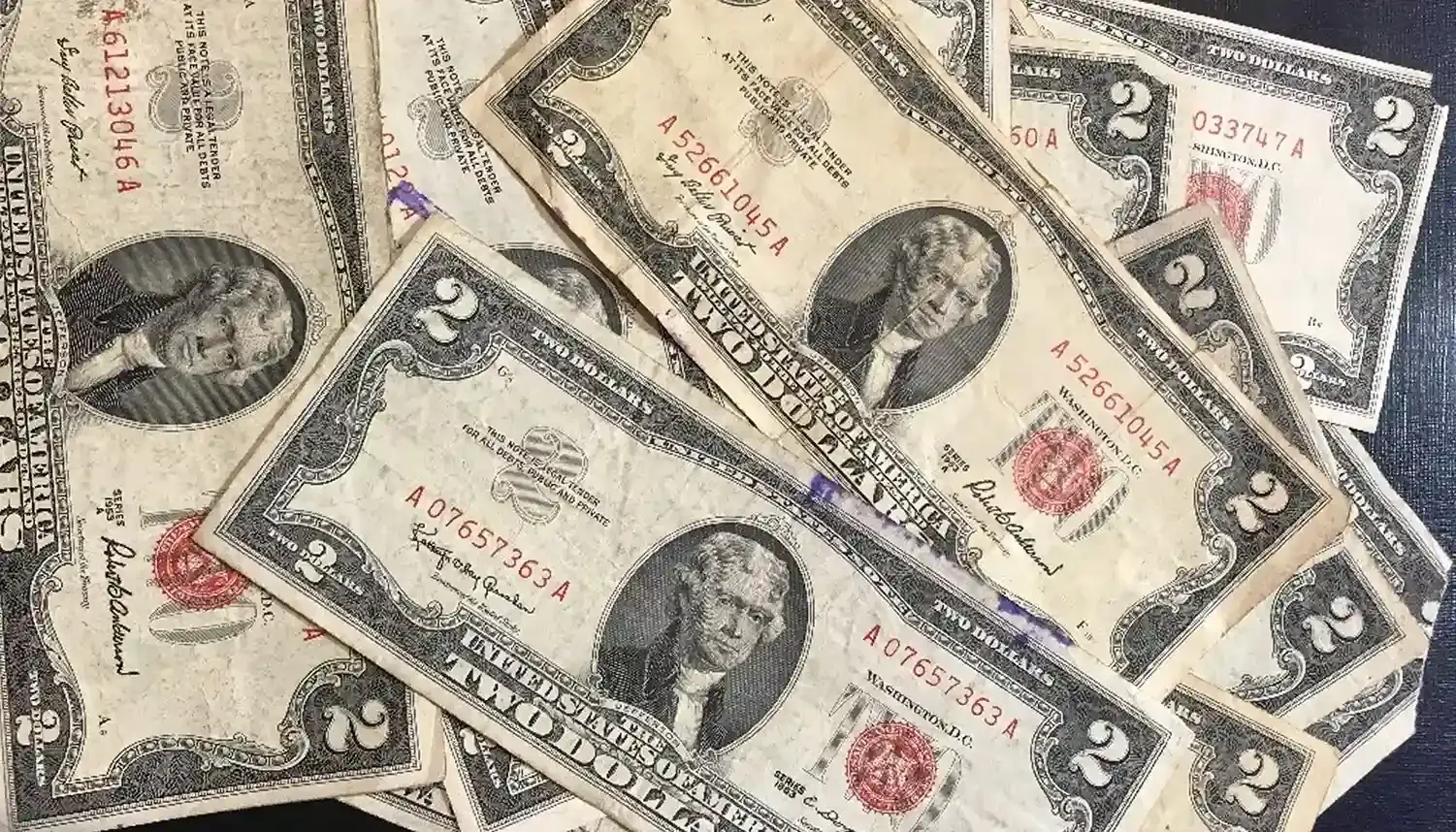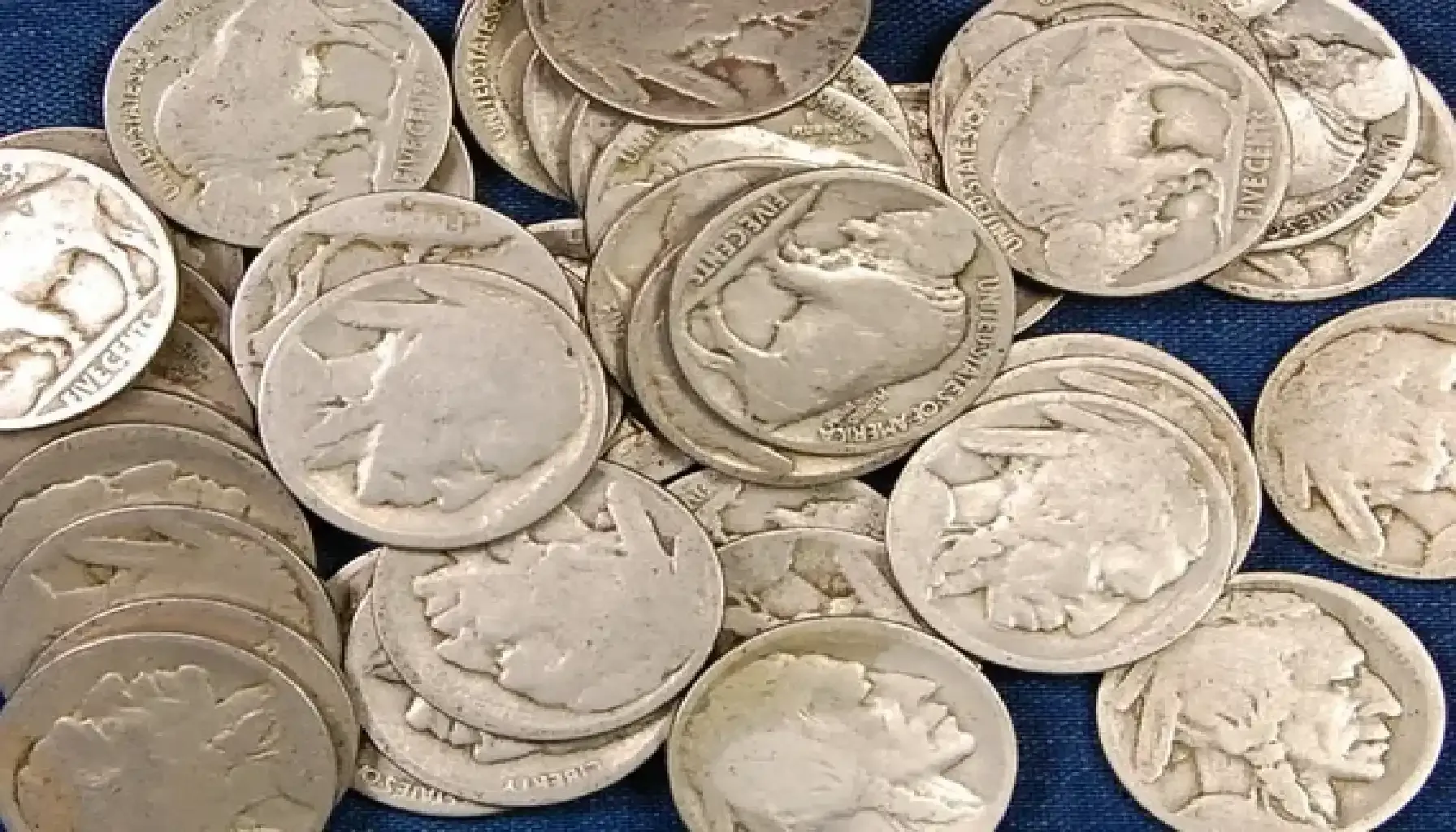Contents:
Nowadays, a dime is considered the smallest coin in the modern US mintage collection, but the significance of such a metal plate is not confined to its size and denomination. Those who were lucky to obtain a dime always celebrate America’s past and impact on the rest of the world. But how much does a dime cost? What is a dime worth in the context of the current market?
In this material, we would like to introduce a few crucial components of the process of coin evaluation, explore which coin identifiers to employ when assessing the dime price, and finally find out why it is important to be aware of the true numismatic value.

Firstly, What are Silver Dimes?
Dimes are small, ten-cent coins minted in the United States of America from 1796. Up until the middle of the 20th century, these coins were made of 90% silver and 10% copper, yet the year 1964 changed this strategy for good. During that period, silver prices rapidly rose, which inevitably caused a change in the composition of the coin. After this date, silver was no longer used as the primary material in dimes, and they were minted using a copper-nickel clad instead.
The fluctuating silver market is the prime source of dime rates. All in all, the most prominent examples might include the Barber Dime, Mercury Dime, and Roosevelt Dime struck before 1965. Knowing which dimes contain silver is an important first step in determining their immediate potential one dime value, apart from what had been imposed by society and its legacy.
Silver Dime Years: Designs Through Decades
Barber Dime (1892–1916)
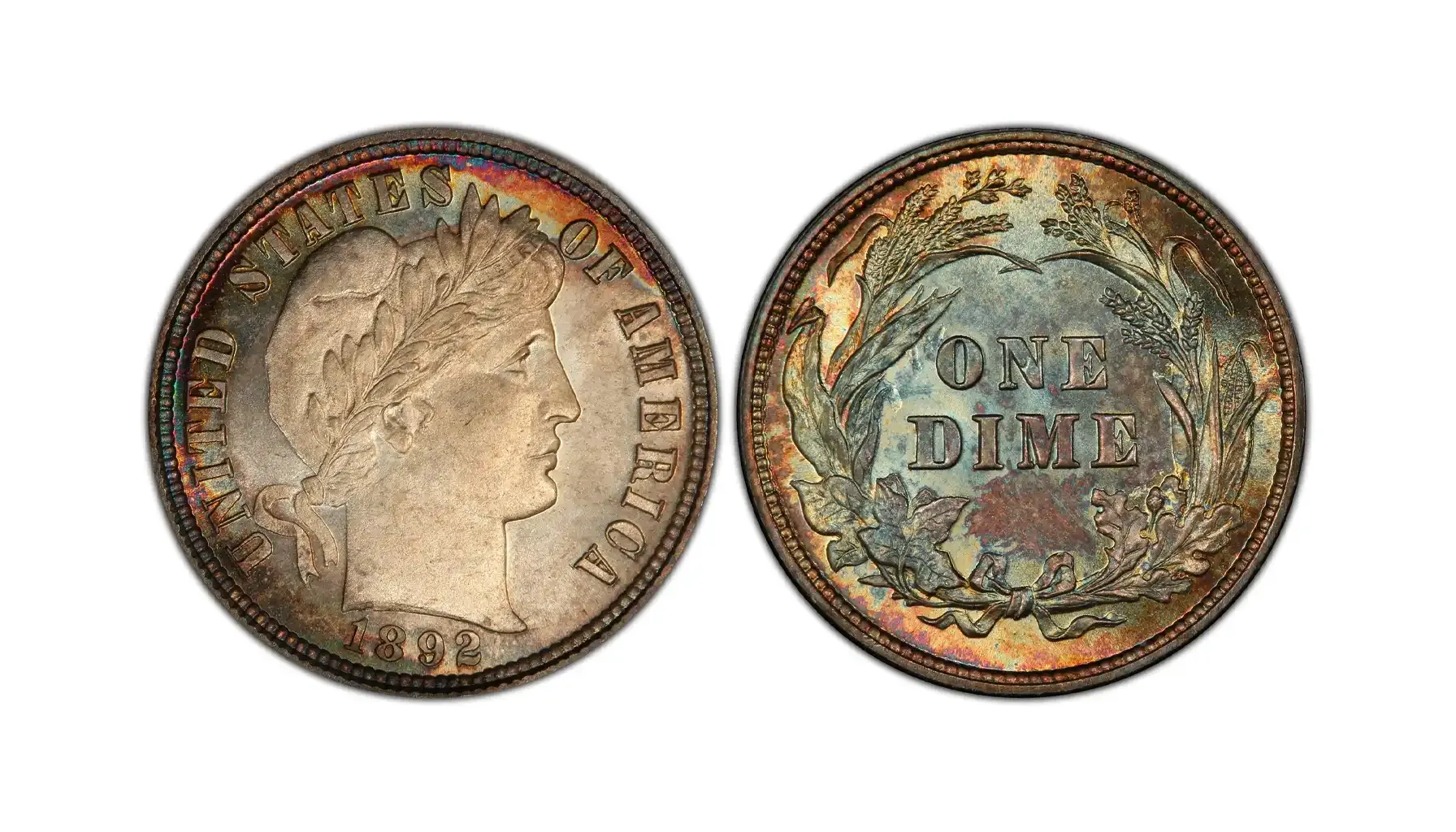
Features Liberty wearing a soft cap on the obverse and a wreath of maize, wheat, and olive branches on the reverse side.
The Main Characteristics | |
Composition | 90% silver, 10% copper |
Diameter | 17.9 mm |
Weight | 2.50 grams |
Thickness | 1.35 mm |
Edge | Reeded |
Designer | Charles E. Barber |
Mint Locations | Philadelphia, Denver, New Orleans, San Francisco |
Mercury Dime (1916–1945)
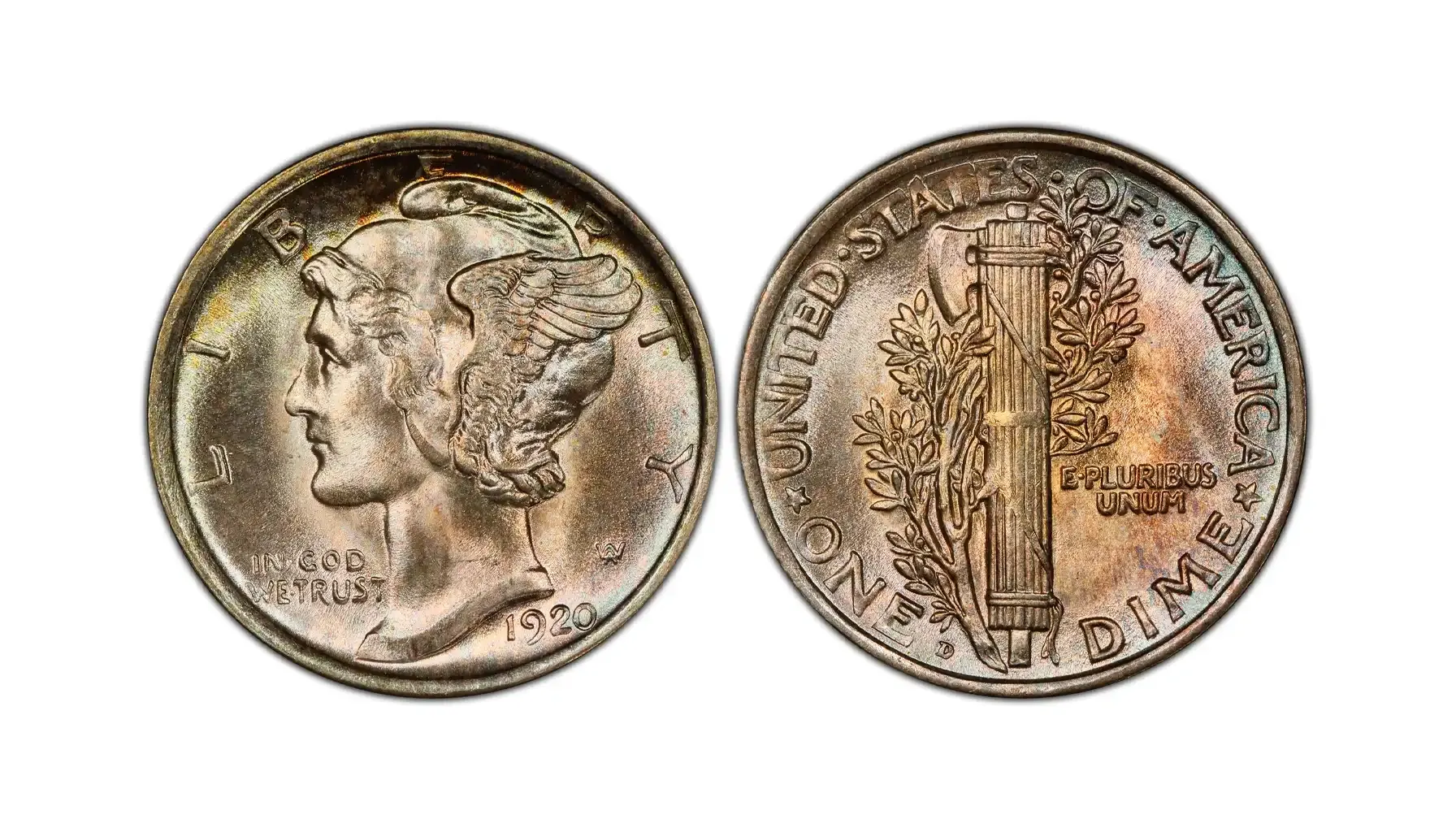
Depicts Liberty with a winged cap, representing the expanding ideals of liberty and independent thought, on the obverse, while the reverse shows a fasces crossed with an olive branch.
The Main Characteristics | |
Composition | 90% silver, 10% copper |
Diameter | 17.9 mm |
Weight | 2.50 grams |
Thickness | 1.35 mm |
Edge | Reeded |
Designer | Adolph A. Weinman |
Mint Locations | Philadelphia, Denver, San Francisco |
Roosevelt Dime (1946–Present)
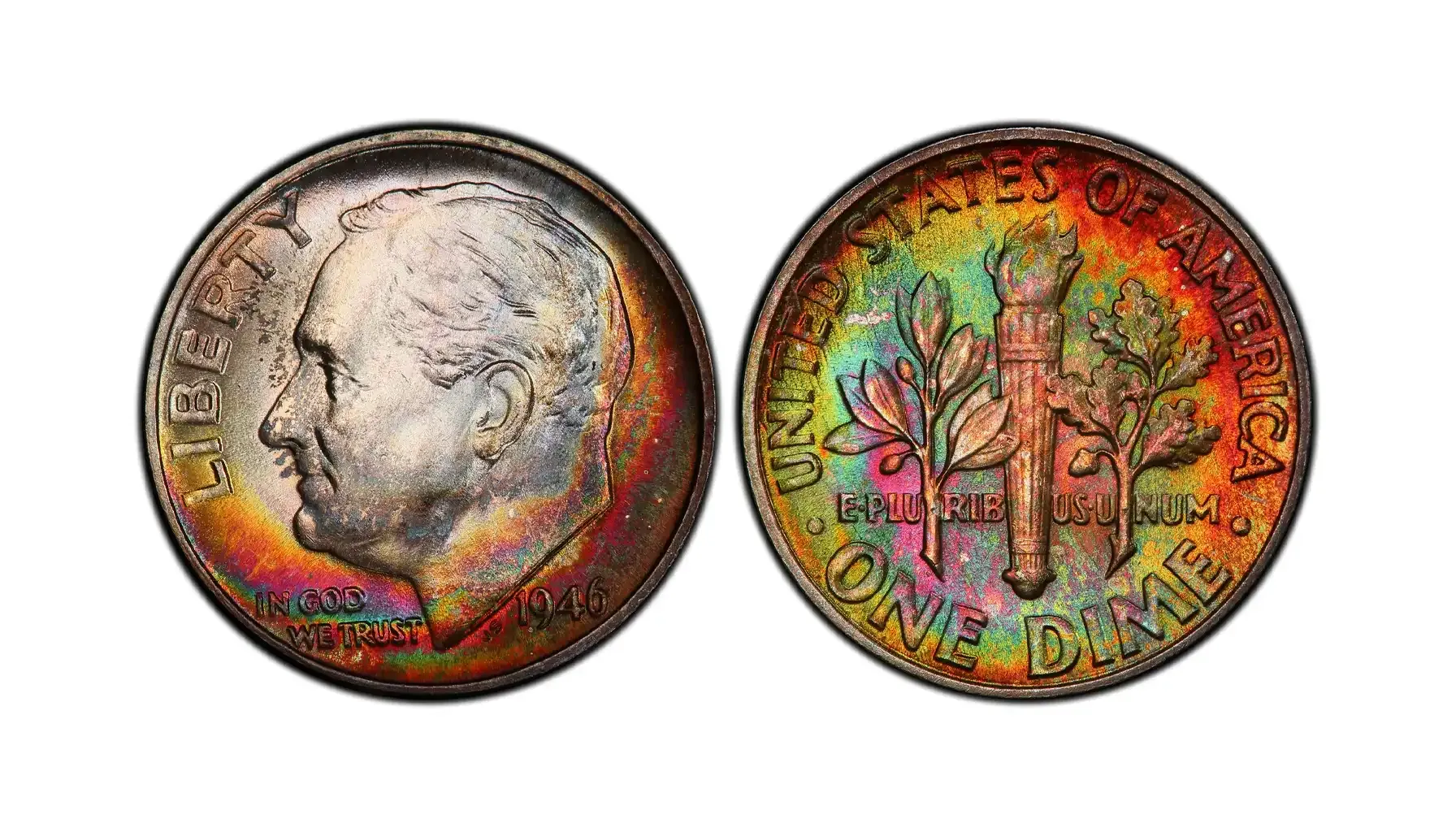
Commemorates President Franklin D. Roosevelt with a left-facing portrait of a former leader on the obverse. The reverse displays an oak branch, olive branch, and a torch, i.e., symbols of strength, independence, and peace.
The Main Characteristics | |
Composition | 90% silver, 10% copper |
Diameter | 17.9 mm |
Weight | 2.50 grams |
Thickness | 1.35 mm |
Edge | Reeded |
Designer | John R. Sinnock |
Mint Marks | Philadelphia, Denver, San Francisco |
How Much Are Silver Dimes Worth?
How much are dimes worth? In fact, it is not as simple to reveal as it seems, thanks to numerous factors, including their silver content, rarity, condition, and historical significance, that altogether mandatorily affect their value. Here is a list of the defining characteristics of any dime:
Silver Melt Value
There are approximately 0.07234 ounces of pure silver in every silver dime produced prior to 1965. So as to find the melt value, one should multiply the silver content by the current market price of silver per ounce. The melt value of a silver dime, for instance, would be about $1.81 if silver were valued at $25 per ounce. Surely enough, the melt value is a reliable starting point for assessing silver dimes because it is connected with the silver market forever.
Rarity and Demand
Certain silver dimes are considered extremely collectible because of their rarity, which might be reflected via specific years and mint marks within the Mercury and Barber dime series. Depending on their condition and market demand, rare coins, such as the 1916-D Mercury Dime, can fetch high prices (i.e., up to hundreds or even thousands of dollars per item). Moreover, if it is a valuable error dime, it can also cost a lot due to its rarity.
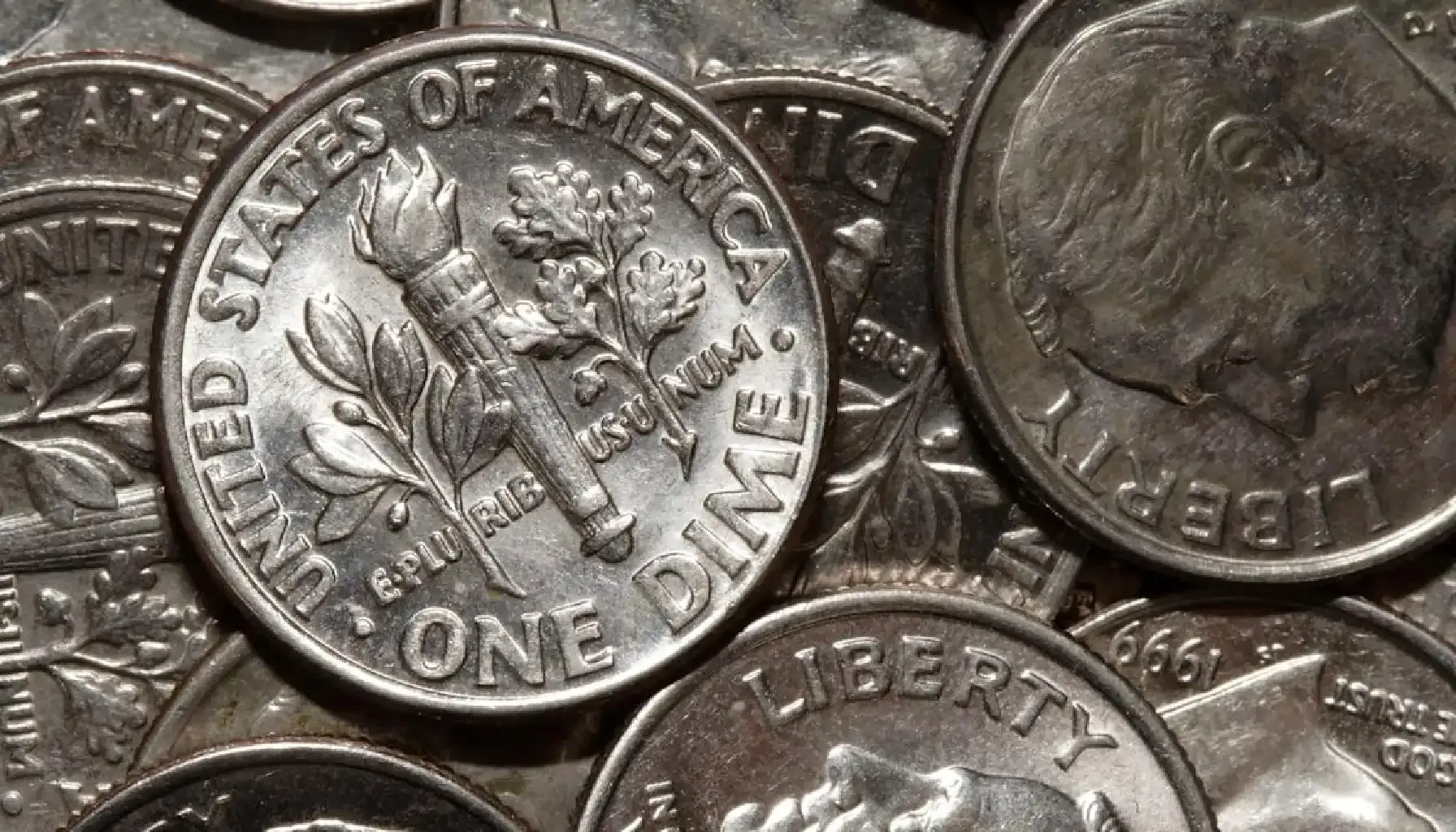
Condition and Grading
How much is a silver dime worth? This is mainly affected by the condition of a coin and its legal representation. Instances with clear details, little wear, and no significant flaws tend to be valued higher and have a higher grade in the end (e.g., the price of MS-65 Barber Dime can be equal to over $500). A certification from a professional grading service, like PCGS or NGC, may help one validate and standardize the coin's condition to make it even more valuable on the market.
Historical Significance
Some silver dime amounts, though, have an additional cultural level, as these might come from noteworthy minting eras or boast about distinctive errors. So, how much is a dime worth? To be more precise, error dimes can be extremely collectible and worth more than usual market prices, whereas dimes struck during World War II might cost up to $200 or more because of their historical significance.
The Most Valuable Silver Dime Coins: Top 3
1894-S 10C Proof
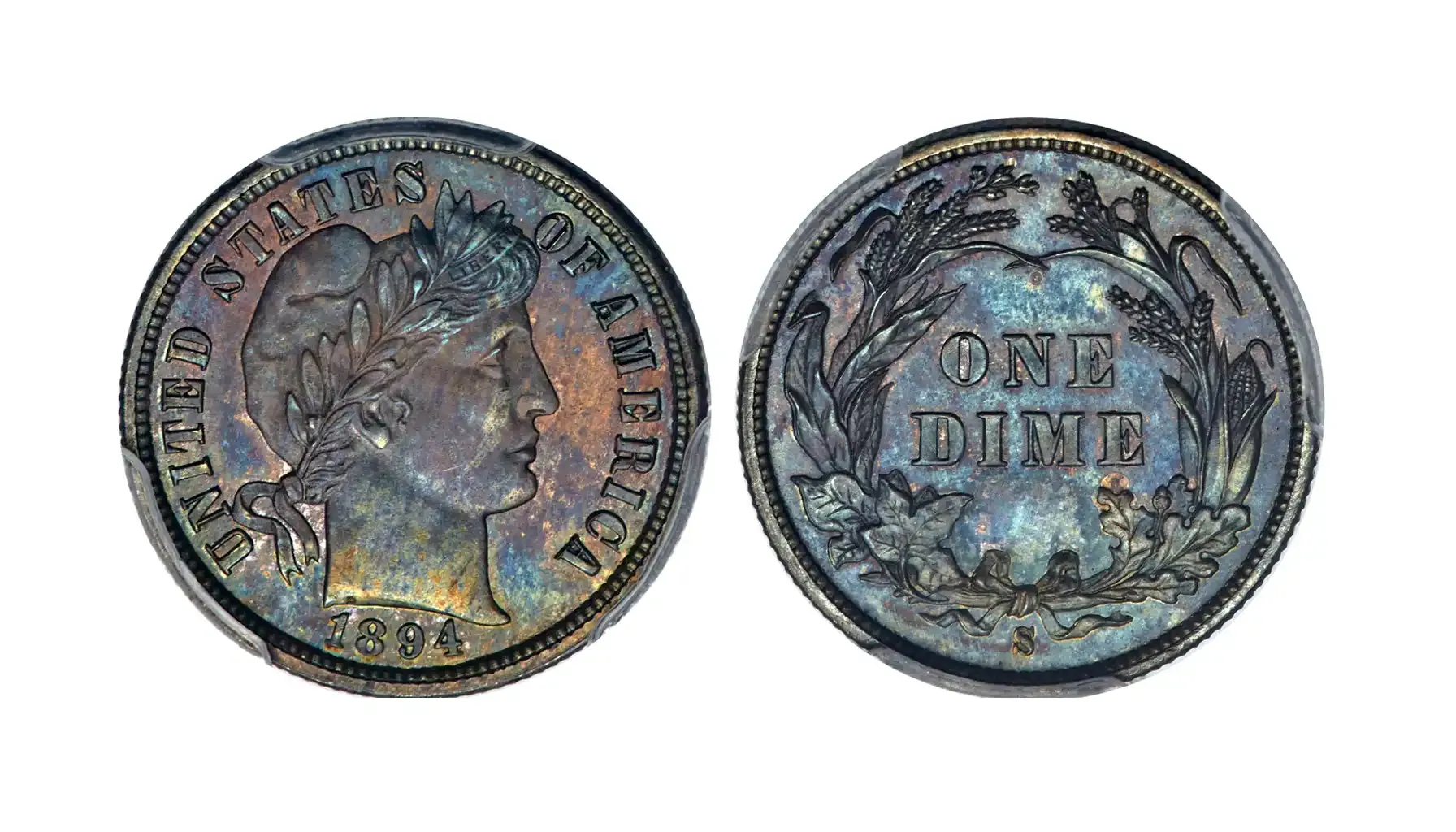
Produced by: San Francisco Mint
Mintage: 24 (only 9 known to exist today)
Auction Record: $2,160,000.00 for PR66BM
The 1894-S Barber Dime is one of the legendary relics hidden in American collections. What is surprising is the fact that only 24 pieces were struck (probably, for presentation purposes or as gifts to authorities or other influential figures). Its scarcity makes the value of silver dimes overly high (and other, yet undiscovered pieces may potentially be worth even more than 2 million, by the way).
1916-D 10С

Produced by: Denver Mint
Mintage: 264,000
Auction Record: $207,000.00 for MS67
The 1916-D is the key date of the Mercury dime series, boasting the lowest mintage struck for circulation. As usual, one may find well-circulated pieces, and these are still worth thousands. Yet, when it comes to the Mint State grades, the silver dimes worth will be even more impressive!
1949 10С
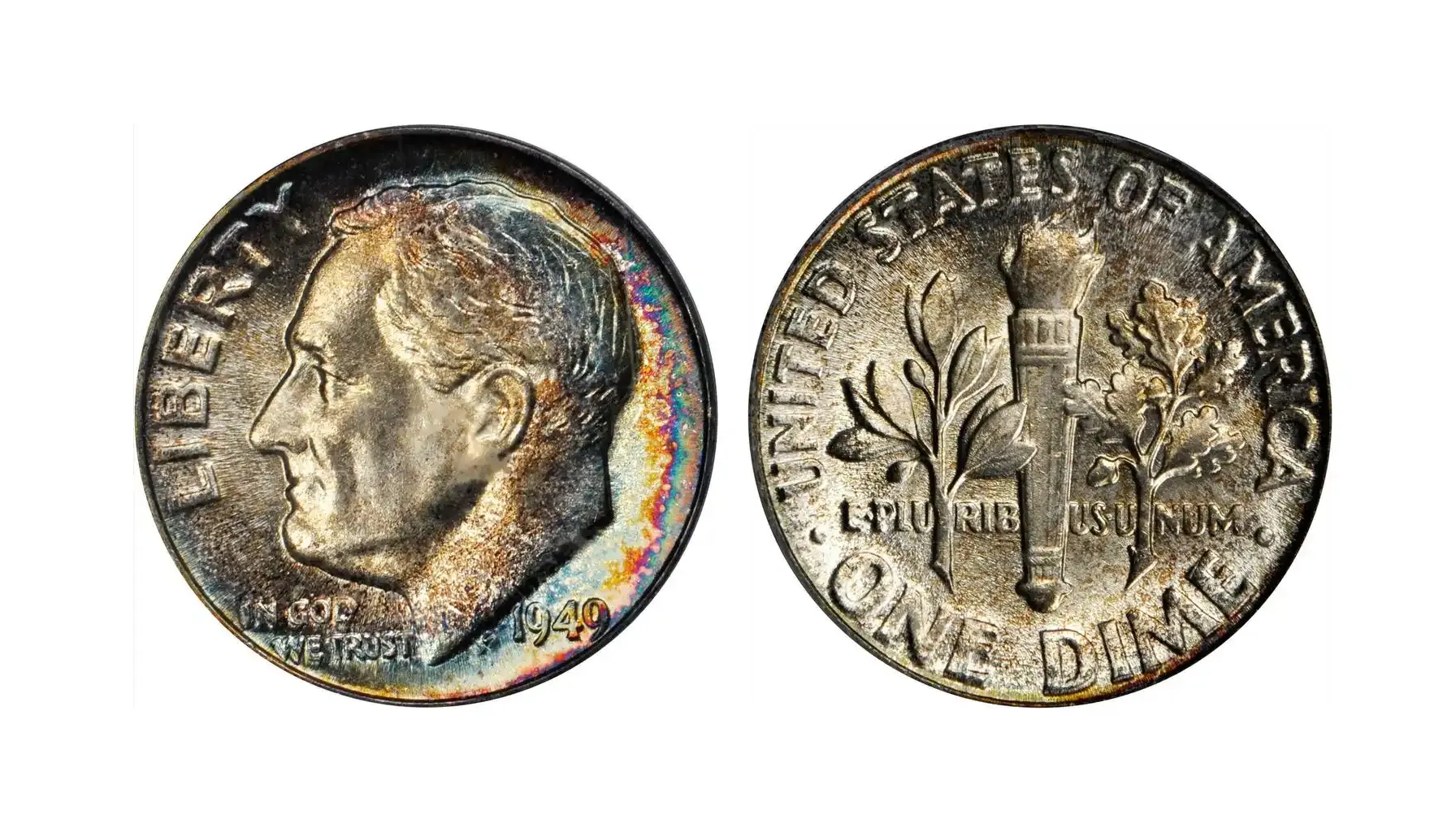
Produced by: Philadelphia Mint
Mintage: 47,945,000
Auction Record: $13,200.00 for MS68FB
The 1949 Roosevelt Dime is a key date in the Roosevelt series born in silver yet. The highest-graded specimens, particularly those with Full Bands (FB) on the reverse, cannot but captivate the collections, thanks to its special designations and overall quality of striking. Exceptional grades are the most important. At the most reputable auctions, such a coin may be treated like a numismatic legend. This is what the 1949 really means.
Tools Needed for Evaluation
Should you wish to estimate how much a dime is worth, it is crucial to rely on the proven resources and utilize relevant tools so as to assess their value, authenticity, and condition more swiftly. Here is what you may need to do it properly:
Magnifying Glass or Loupe: With the use of a high-quality magnifying glass or jeweler's loupe (with 10x magnification), you can always examine the coin's fine details, including dates, mint marks, and any degree of wear or flaws.
Digital Scale: The ideal weight for silver dimes is 2.5 grams, and the validity of a coin can be verified with the use of a digital scale that measures grams to a maximum of two decimals. Significant underweighting of the coin could be a symptom of possible forgery or severe wear, not to mention.
Coin Reference App: What is also essential is the data that should be acquired in order to assess your coin properly. Via apps like Coin ID Scanner, one can grasp any details about mint years, mint marks, and typical market values, too. All you need to do is scan a coin with the use of your smartphone and analyze the information delivered by the app. Indeed, it is a rapid method of checking information regarding rare or erroneous coins.
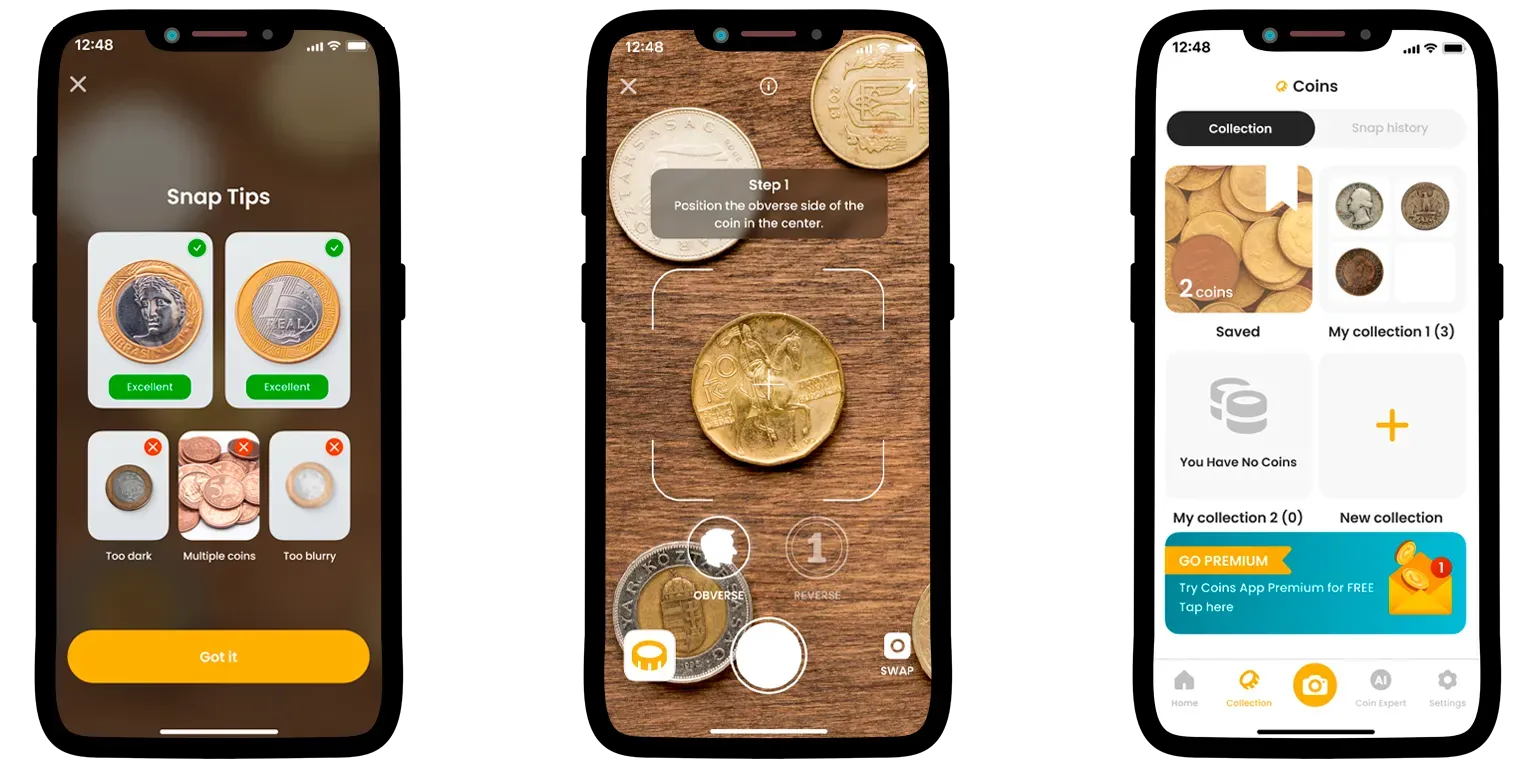
Caliper: A caliper is another essential tool that may let you measure a silver dime's thickness and diameter. NB: Genuine silver dimes measure approximately 17.9 mm in diameter and 1.35 mm in thickness. Coins that do not fit these measurements might need to be inspected more thoroughly.
Precious Metal Price Tracker: Finally, having a precious metal price tracker on your phone is helpful when you urgently need to determine the melt value of a silver dime (however, you can check the value of all coins you want, e.g., the 1971 Kennedy half dollar). Nevertheless, this can also be available on related websites and applications, too. Just navigate the numismatic digital space and ask for help if needed.
What You Should Do To Identify the Value of Silver Dimes
How much do dimes cost? Now that you have been equipped with all the essential resources and devices, you can finally commence. Firstly, check the date and mint mark to determine whether the dime is rare or belongs to a series with silver content (minted before 1965).
After you have done it, make sure you assess the coin’s condition by verifying that the dime is composed of silver. To make sure the coin is not made of a magnetic material like steel, you can check its weight (about 2.5 grams) or use a magnet.
Moreover, you can find out if the coin has special qualities (such as limited mintage or errors) that could raise its market worth. To do so and confirm prices and details on the coin's year, mint, and condition, consult a catalog, reference book, or app like Coin ID Scanner. Using the latter, look for comparable silver dimes in the same grade and condition to estimate value more precisely.
There are various types of dimes, and each of them has its own value and market potential, too. So, keep track of your collection, follow relevant information about the coin you are interested in, and be ready for your coin hunt!

